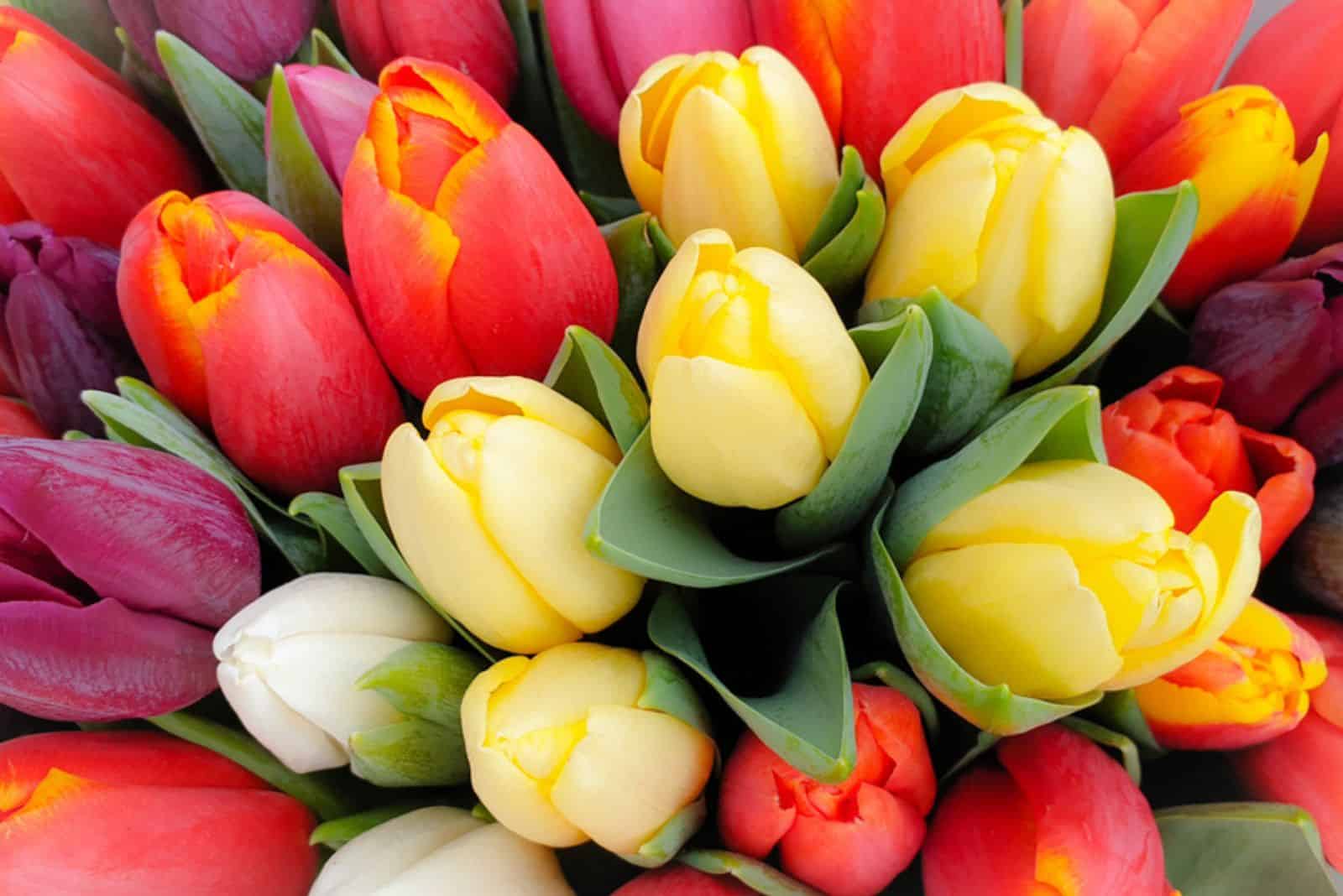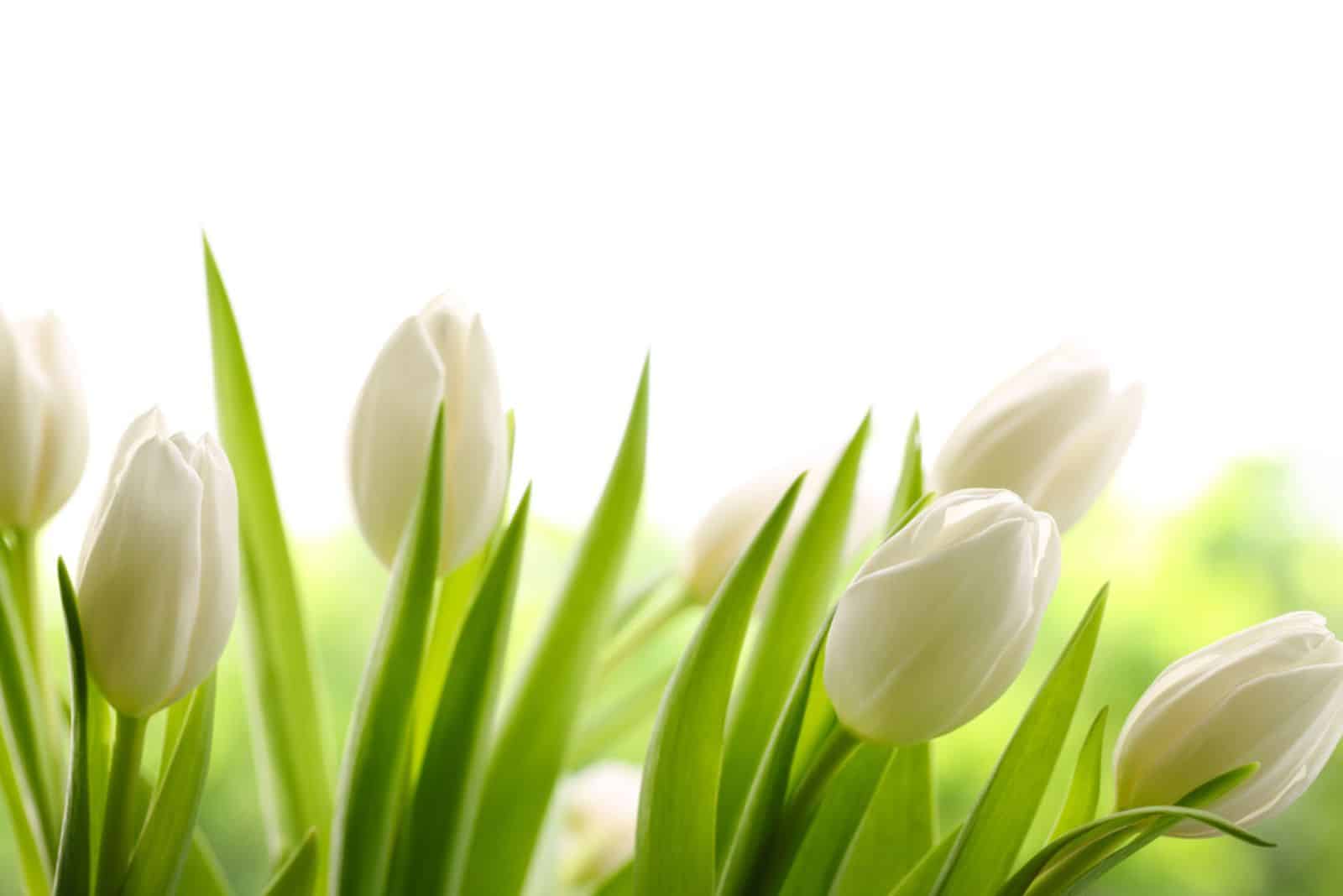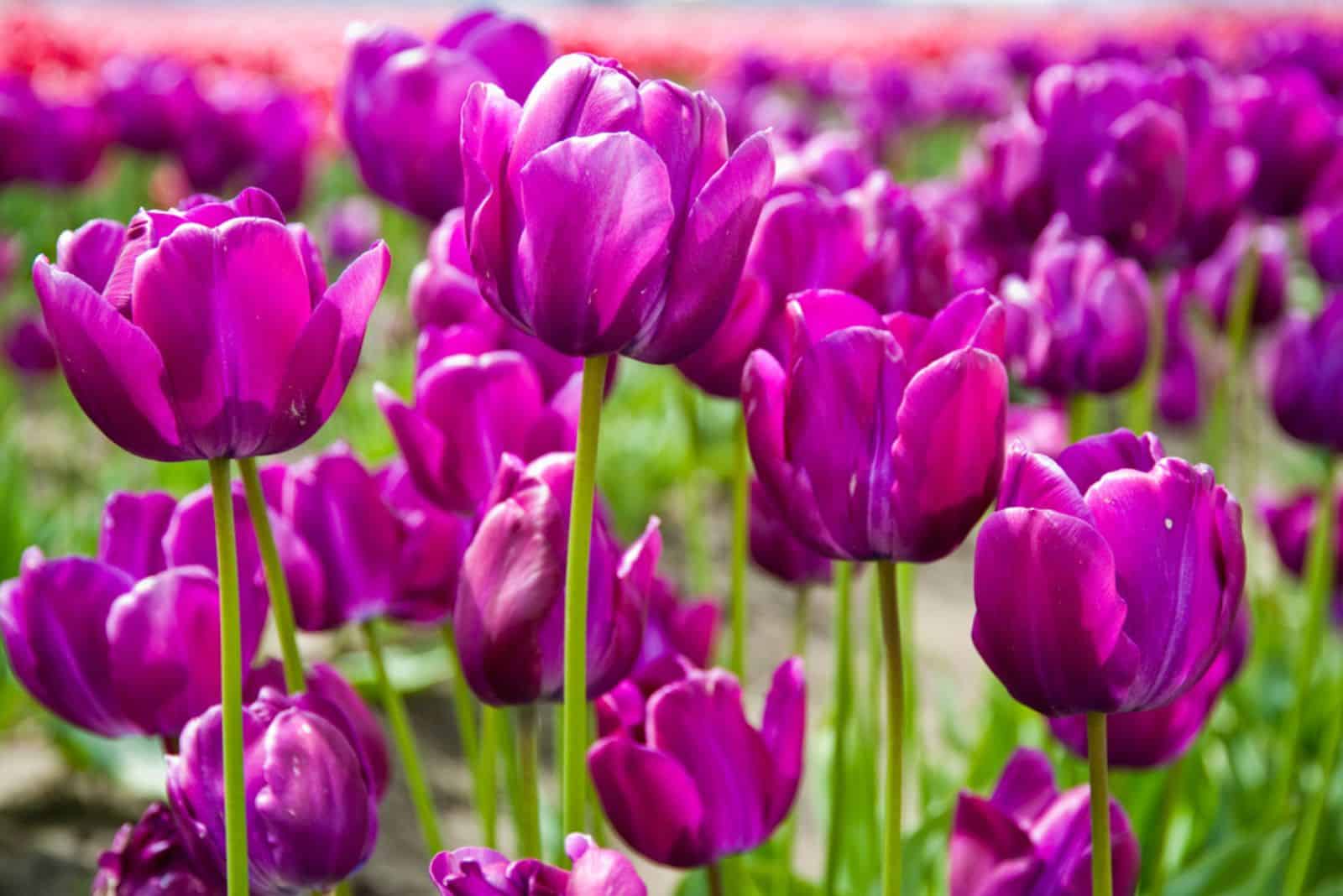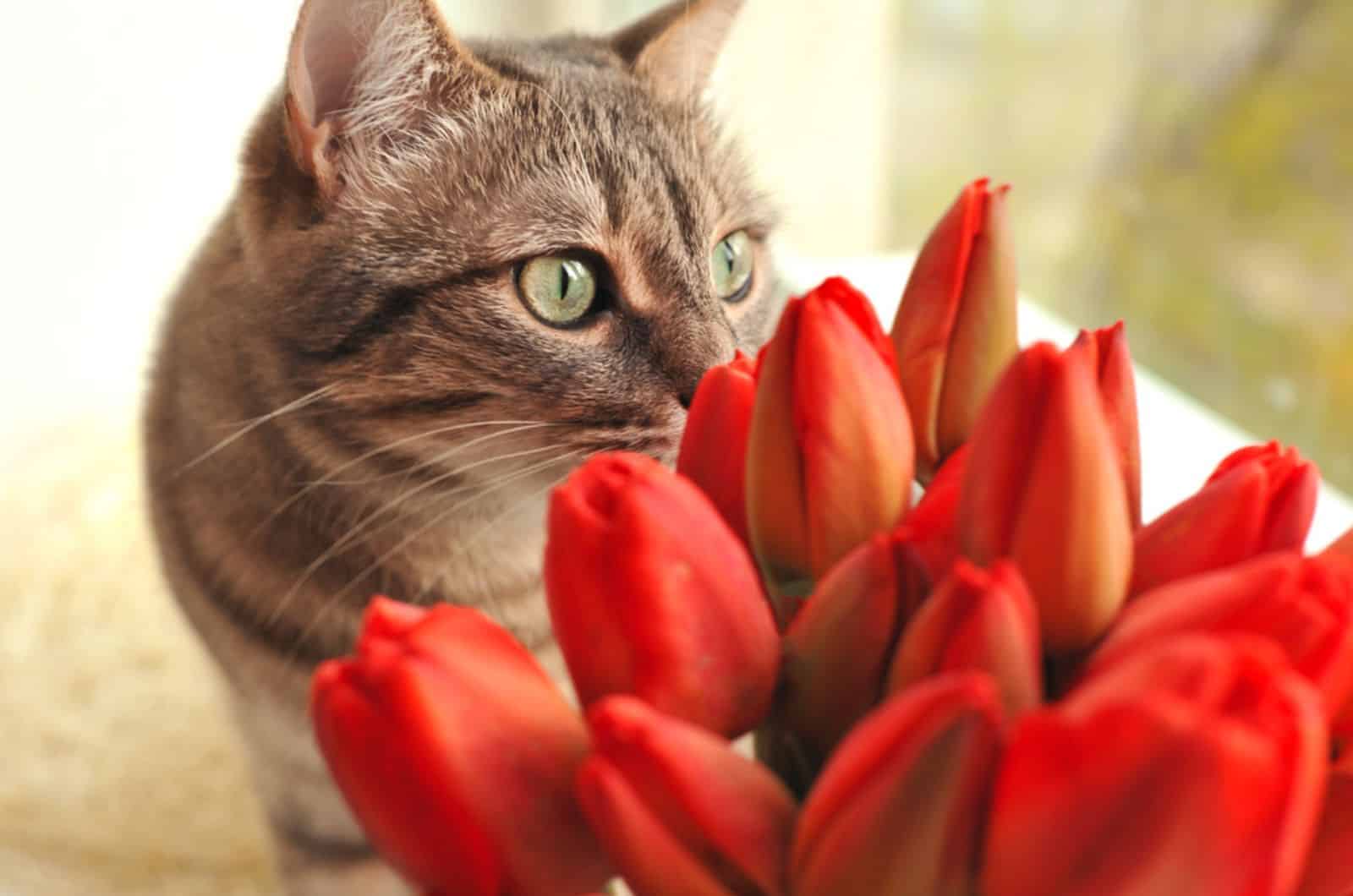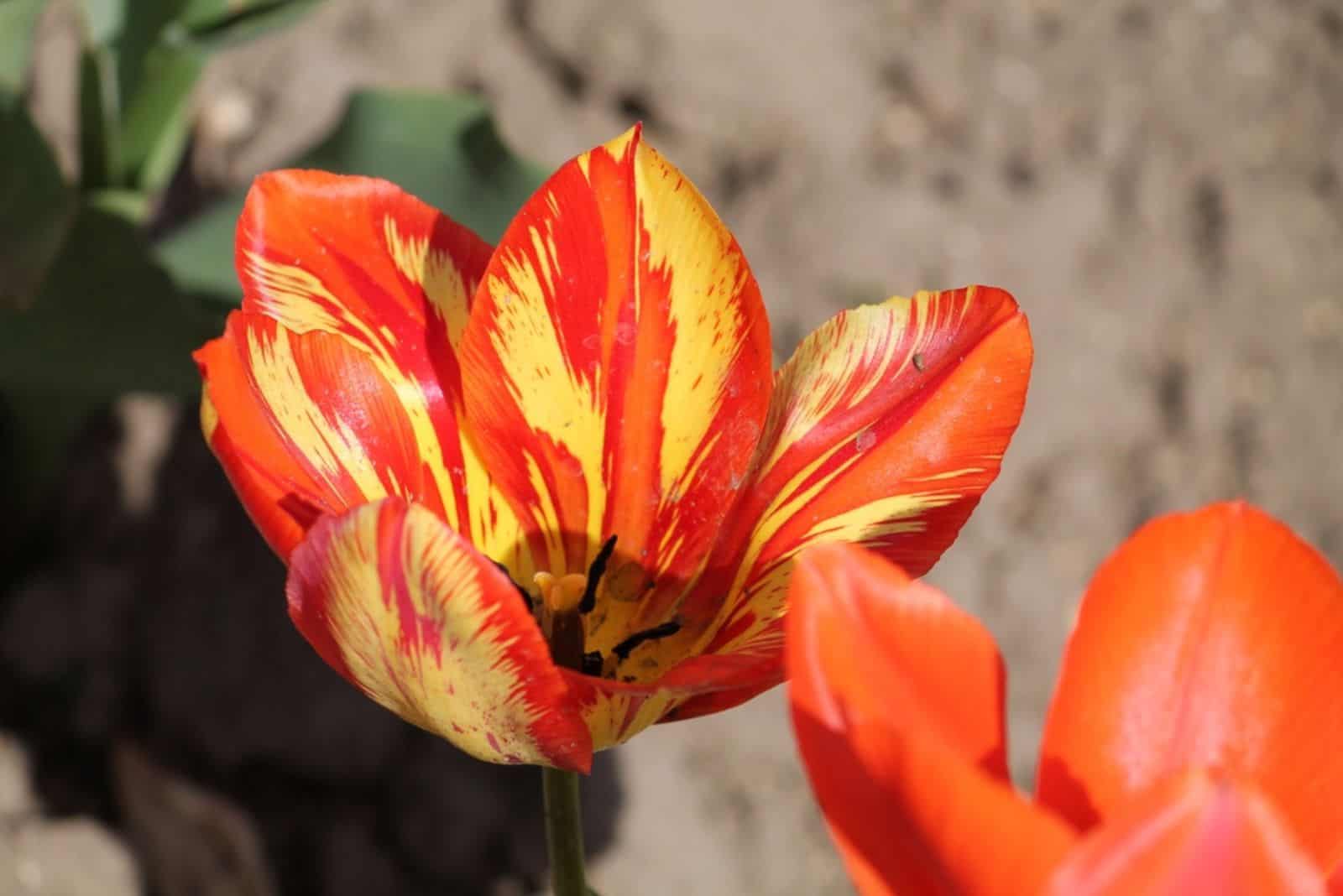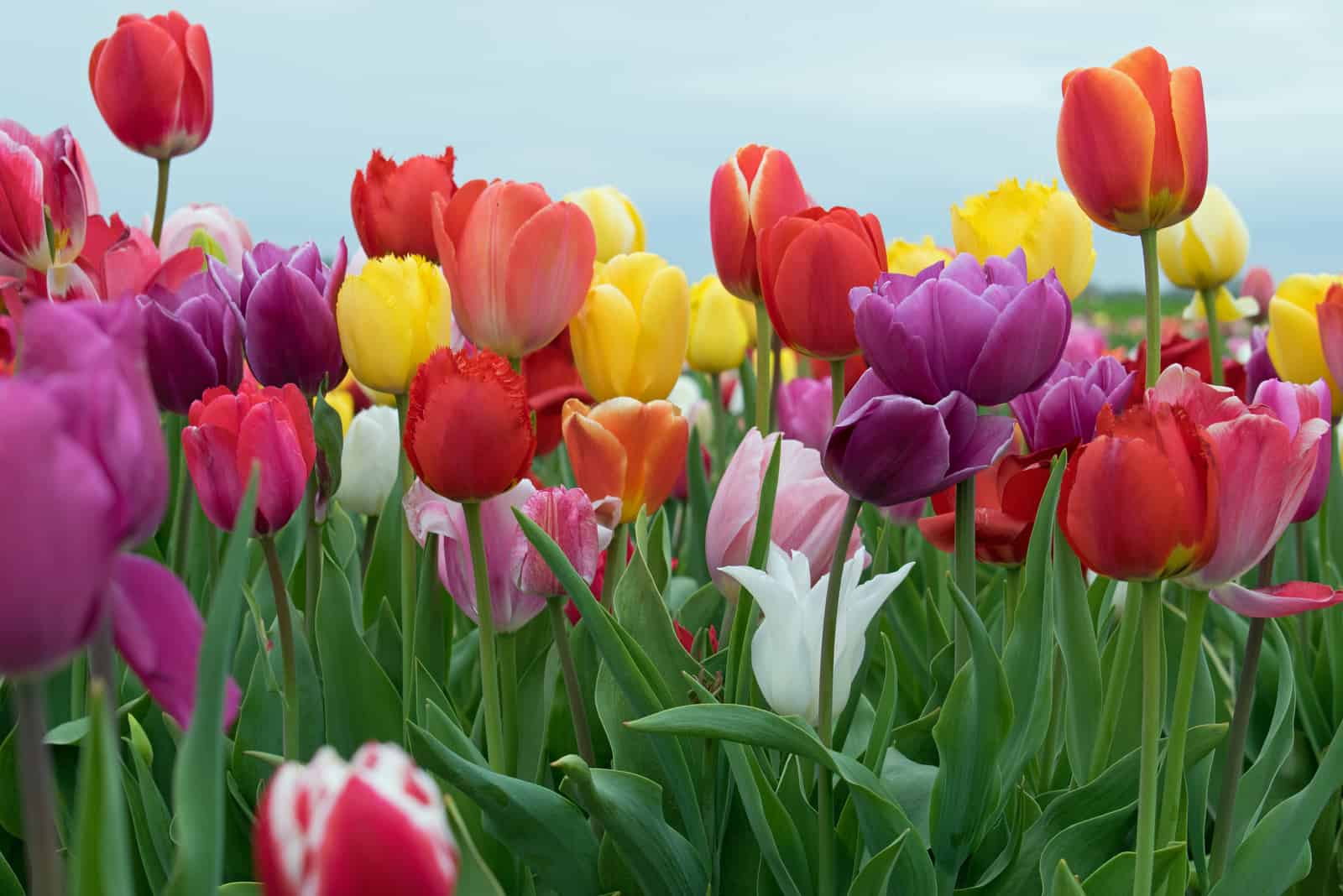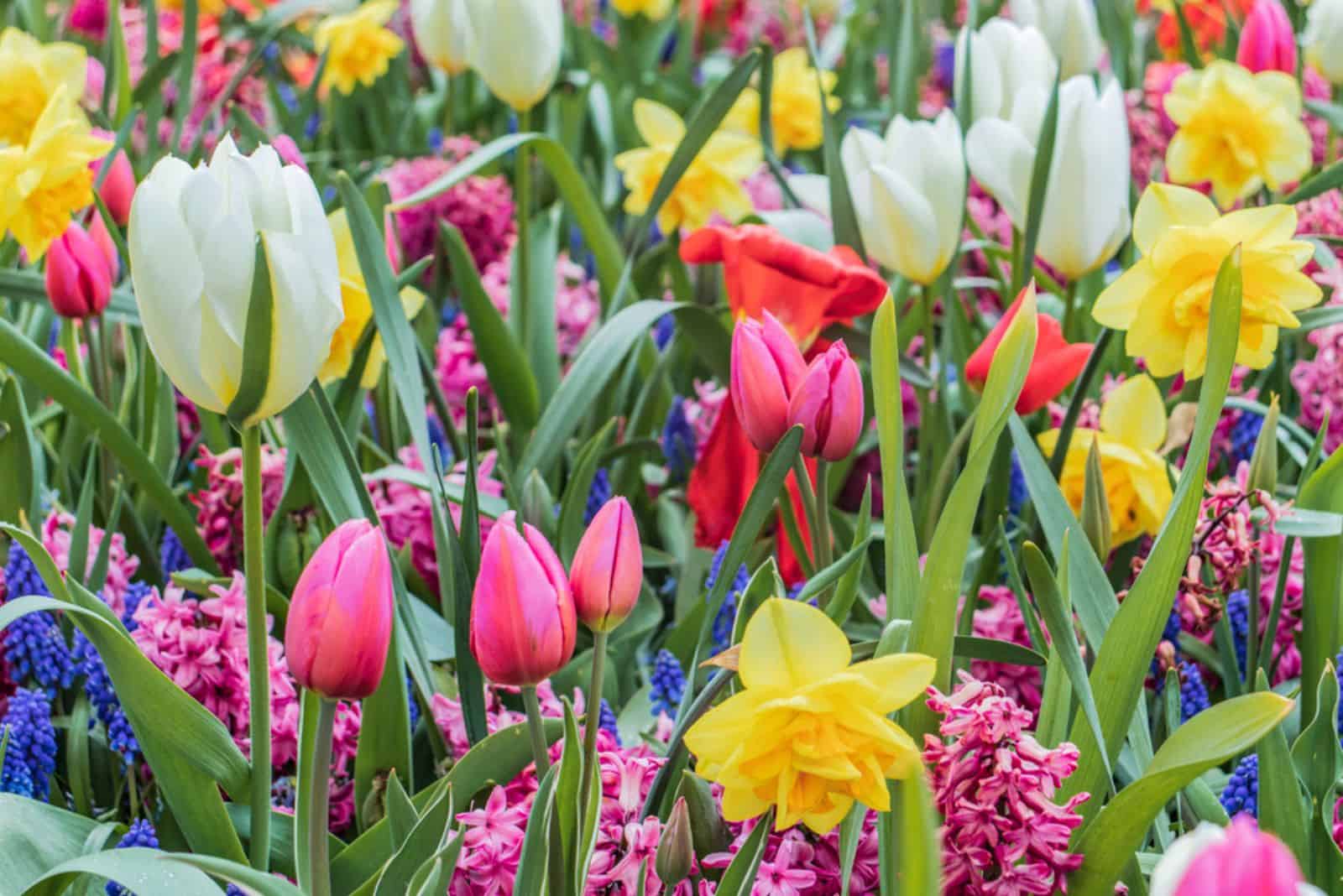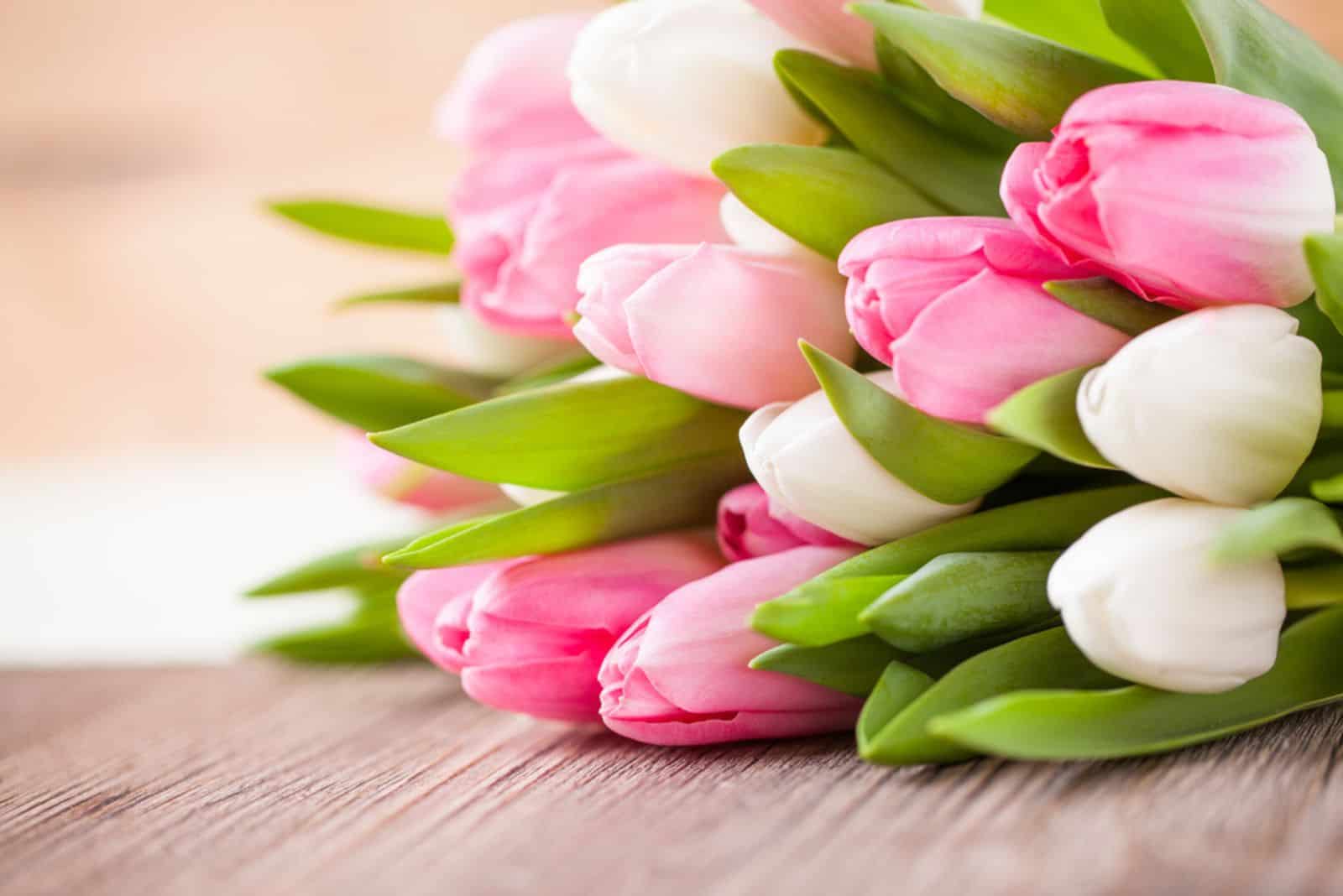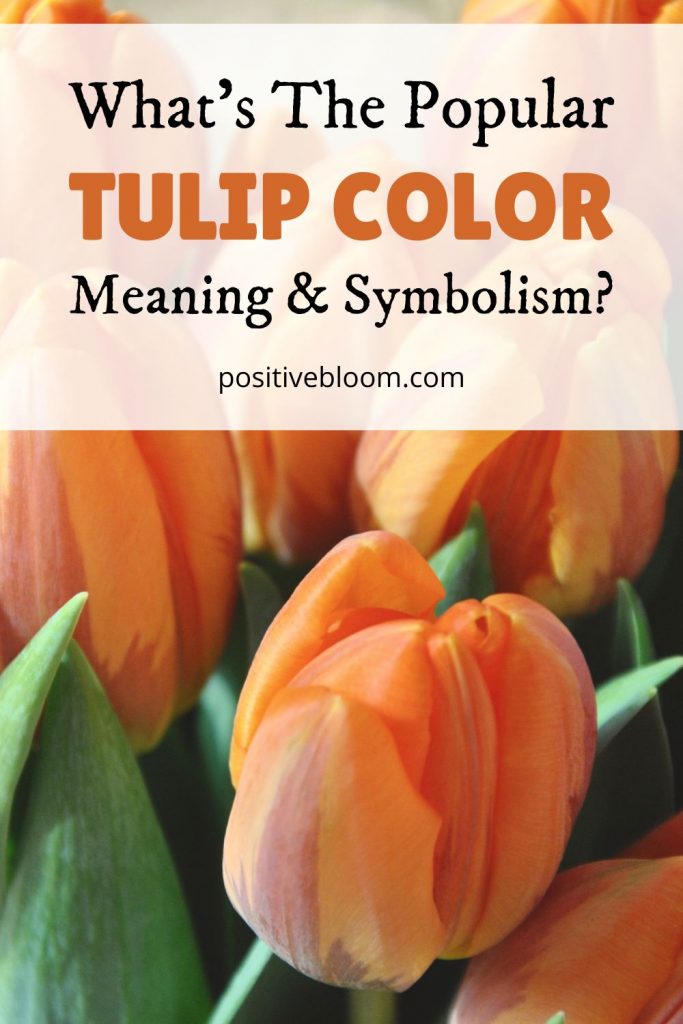Tulips are spectacular plants that we love growing and giving to our loved ones, but did you know that different colors symbolize various things?
For instance, you definitely shouldn’t give red tulips to someone if you wish to express your condolences.
To help you avoid making mistakes with your gifts, we will discuss tulip color meaning in the following sections, and as there are so many hues of this plant, it might not be an easy task!
However, the tulip flower meaning hasn’t always been the same; it’s changed throughout history, so we included different symbolisms as they are today, and also some from the past.
We’ll also briefly discuss the history and origin of this plant (which are fascinating), and we’ll talk about their importance in different cultures and uses throughout history.
Before we get to all that, let’s learn more about some tulip general specifics:
[table id=482 /]
Tulip Color Meaning: What Do The Different Colors Of Tulips Symbolize?
There are many mesmerizing tulip quotes that will make you love these flowers even more, and the next step is growing them yourselves.
But how to choose which one to cultivate?
Well, different tulip colors carry different meanings, and if you want to surprise your fellow florists, you can breed specific varieties and give them the best gift they could ever wish for.
But enough of all that; let’s talk about the different meanings of tulips!
White Tulips Meaning
White tulips have multiple meanings, which depend on circumstances. For instance, they are a traditional symbol of expressing condolences or apologizing for something.
However, the white color usually symbolizes purity, so the meaning of white tulips is now extended to convey the sense of pure love and new life. Therefore, they are a popular decoration for celebrations after receiving sacraments of baptism, holy communion, and holy matrimony.
Cream Tulips Meaning
Even though they’re quite similar, cream tulips don’t represent the same thing as white ones. This color symbolizes commitment, so you can give them to anyone to whom you want to say, “I’ll love you for eternity!” be it your friend, your family member, or a special someone!
Yellow Tulips Meaning
Even though the color yellow often symbolizes cowardice, it is not the case with tulips.
It is a happy color, so it signifies cheerfulness and hope. It is an excellent gift at birthday parties, and some say planting it in your garden can bring good luck!
Purple Tulips Meaning
Purple was once a color reserved only for royalty and the richest because purple dye was really difficult to make (Ancient Romans boiled snails, and it took more than 250,000 gastropods to produce an ounce).
And today, it signifies elegance, royalty, and exquisiteness.
Pink Tulips Meaning
This tulip color symbolizes affection and that we care for someone; it signifies love and good wishes. However, it doesn’t mean passionate love toward your soul mate, rather it is something to give your family members and good friends to show you care for them.
It is an excellent present to say, “Congratulations!”, so you can give it to celebrate someone’s graduation, new job, promotion, etc.
Orange Tulips Meaning
There’s definitely been a time when our inner florist took the best of us, and we asked ourselves: “What do tulips represent?”.
Well, the good news is that you can find it in Floriography, which is on the list of books about flowers. It speaks about the language of flowers and what they represent.
A bouquet of orange tulips, for instance, can mean many different things, so be careful who you give it to!
It can signify friendship and feelings of appreciation, but due to its fiery color, it can symbolize secret or forbidden love.
Orange tulips can also mean that there is a mutual understanding between two people in a relationship.
Red Tulips Meaning
Red tulips are popular flowers we give on anniversaries or Valentine’s Day, and it’s all got to do with their meaning.
This color symbolizes eternal and true love, and feelings of passion and lust! Red tulips are famous Persian flowers.
Blue Tulips Meaning
Unfortunately, true blue tulips don’t exist, but that didn’t stop breeders from trying. However, there are shades of purple tulips that remind us of the color blue!
This spring flower symbolizes good luck, so it’s an excellent present for birthday parties, anniversaries, or even weddings.
Green Tulip Meaning
Unlike blue tulips, green ones actually do exist. This color symbolizes rebirth, so green tulips signify new and hopeful beginnings.
If your friend suddenly finds a new path in their life or changes their career, you can give them a lovely bouquet of green tulips!
Variegated Tulip Meaning
There are many different color combinations among tulips, but they generally evoke romantic feelings.
The common meaning behind these rich color combinations is “beautiful eyes,” as gorgeous eyes are a complex combination of different shades.
They are an amazing gift for someone you fell in love with at first sight or to that special someone whose eyes give you butterflies!
Black Tulip Meaning
Dutch tulip breeders have tried for many years to create a pure black tulip, and none of them could get the shade they hoped for.
All “black tulips” are actually dark purple!
The darkest one (‘Paul Scherer’) was created by Geert Hageman in 1986, and it is considered the darkest tulip today, although you can recognize the purple tones.
However, even though they are just a dark shade of purple, black tulips symbolize power and strength.
How Tulip Meaning Has Changed Throughout History
The meaning of tulips has changed throughout history. For instance, these flowers symbolized charity in the Victorian era.
Furthermore, yellow tulips signified jealousy and hopeless love, even though today they represent happiness and cheer.
In Turkey, this flower symbolized perfect love based on the tragic legend of Farhad and Shirin (and we’ll talk about that in a bit).
Origin And History Of The Tulip Flower
Even though we connect tulips to the Netherlands, did you know they are actually from Asia? They even belong to the list of awe-inspiring Chinese flowers as they originated from Central Asia.
However, the first cultivation of tulips began in Turkey in 1000 AD. The mere name “tulip” comes from the Persian word delband, which means “turban.”
And by the 15th century, they were widely grown and even became the symbol of the Ottoman Empire.
In the 16th century, tulips were brought to Europe, and by the early 18th century, the mania spread to the entire world (or so to speak!).
Importance Of Tulips In Different Cultures
These flowers have great cultural significance in Turkey, and there’s even a Persian and Turkish legend that tells of Farhad and Shirin and their perfect love for one another.
In Holland, a tulip festival is held every spring, and they even celebrate National Tulip Day.
Legend Of Farhad And Shirin
One version speaks of a stone cutter, Farhad, who loved princess Shirin. He played music on his flute, and the princess’s maid brought her to hear it. Shirin fell in love with Farhad, but her father was against it.
He sent Farhad on a task to dig a deep and long canal through the mountain, and when Farhad was almost complete, the princess’s father sent one of her maids to tell him that Shirin was dead.
Farhad killed himself, and when the princess heard it, she ran there and took her own life. It is said that each drop of their blood grew into a scarlet tulip.
There are many versions of this legend (sometimes Farhad is a muralist, sometimes a prince, etc.), but they all have tragic endings.
Tulip Festival In Amsterdam
During the Tulip Festival, the tulip fields near Amsterdam are in full bloom. The best ones are in the Keukenhof Tulip Garden, which is open from 24 March to 15 May 2022.
And if you happen to be in the Netherlands at this time of year, we recommend paying a visit to it. Just get your ticket online to avoid long lines at the checkout!
Interestingly, the National Tulip Day is actually in January, when there are no flowering tulips!
The Use Of Tulips Throughout History
One of the things we love most about these flowers is that you can either cultivate them in soil or grow tulip bulbs hydroponically.
Today we grow these flowers for their beauty and follow the care tips we received to the letter, but people have found other uses for this plant throughout history.
There is a story that people ate tulip bulbs during World War II, especially during the famine in Holland. According to J.H. Wurmerdam, who grew up in the Netherlands during World War II, the bulbs caused skin rashes.
Although many believe that eating tulip bulbs is no longer common and that they should not be consumed, the petals are edible and often used to garnish salads and other dishes.
Final Thoughts
There are many colorful flowers that we grow in our gardens, such as roses, marigolds, chrysanthemums, etc., but tulips definitely have that certain something which makes them unique.
We know many things about these flowers, like their cultivation and basic requirements, but there’s always more to learn.
Therefore, we decided to talk about the tulip color meaning, what they represent today and throughout history, their origin, and their importance in different cultures, etc.
We discussed all these things in the article above and even included some interesting applications during the Second World War.
Carefully study their meanings, grow your own tulips, and surprise your fellow florist with a lovely bouquet.
Good luck, and until next time!
Like this post? Share or pin it for later!

